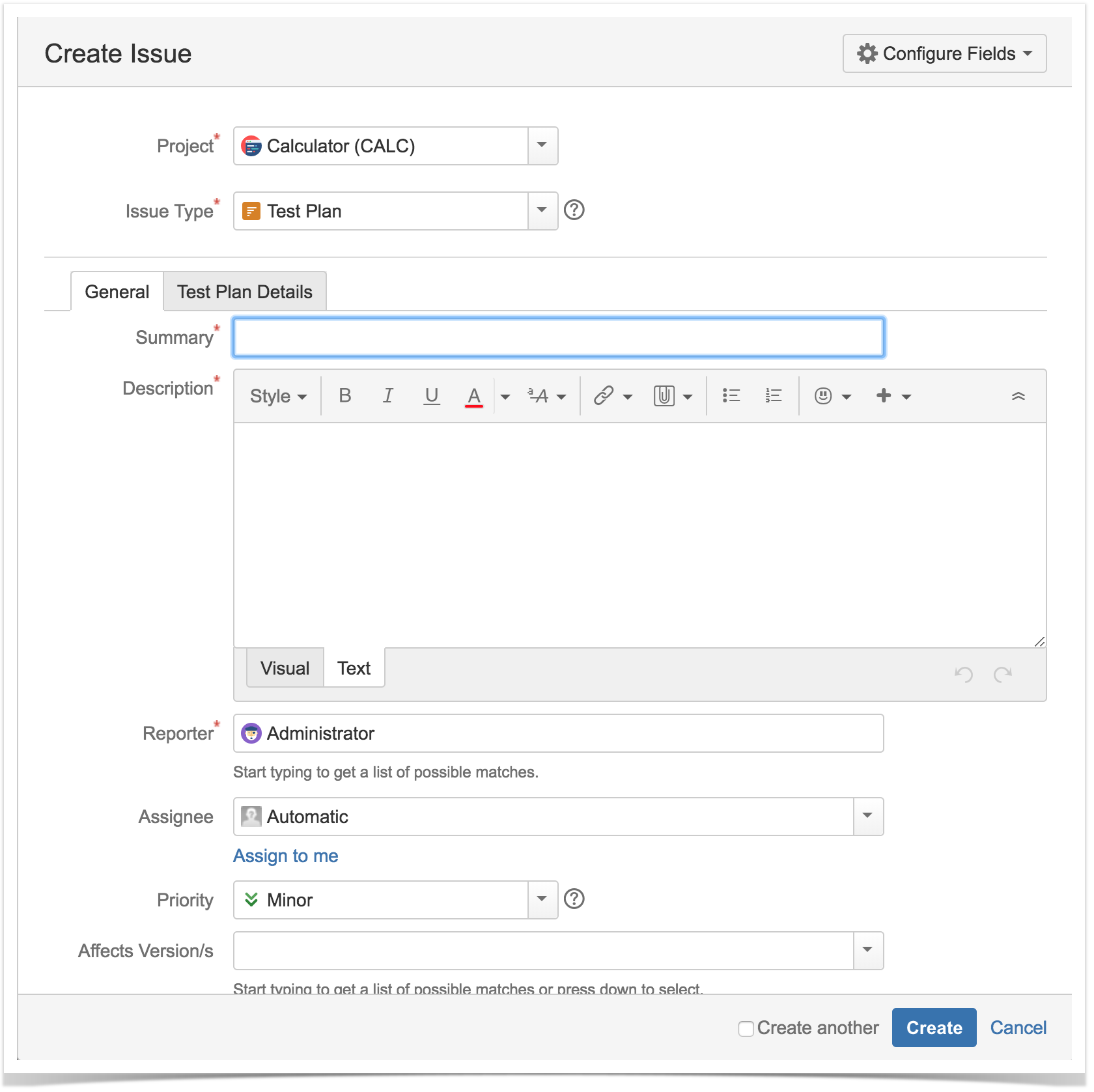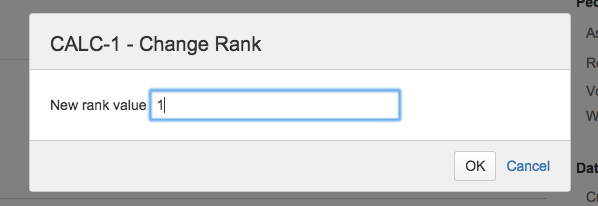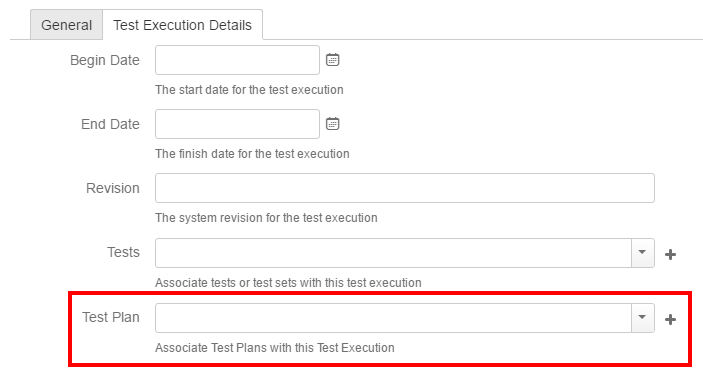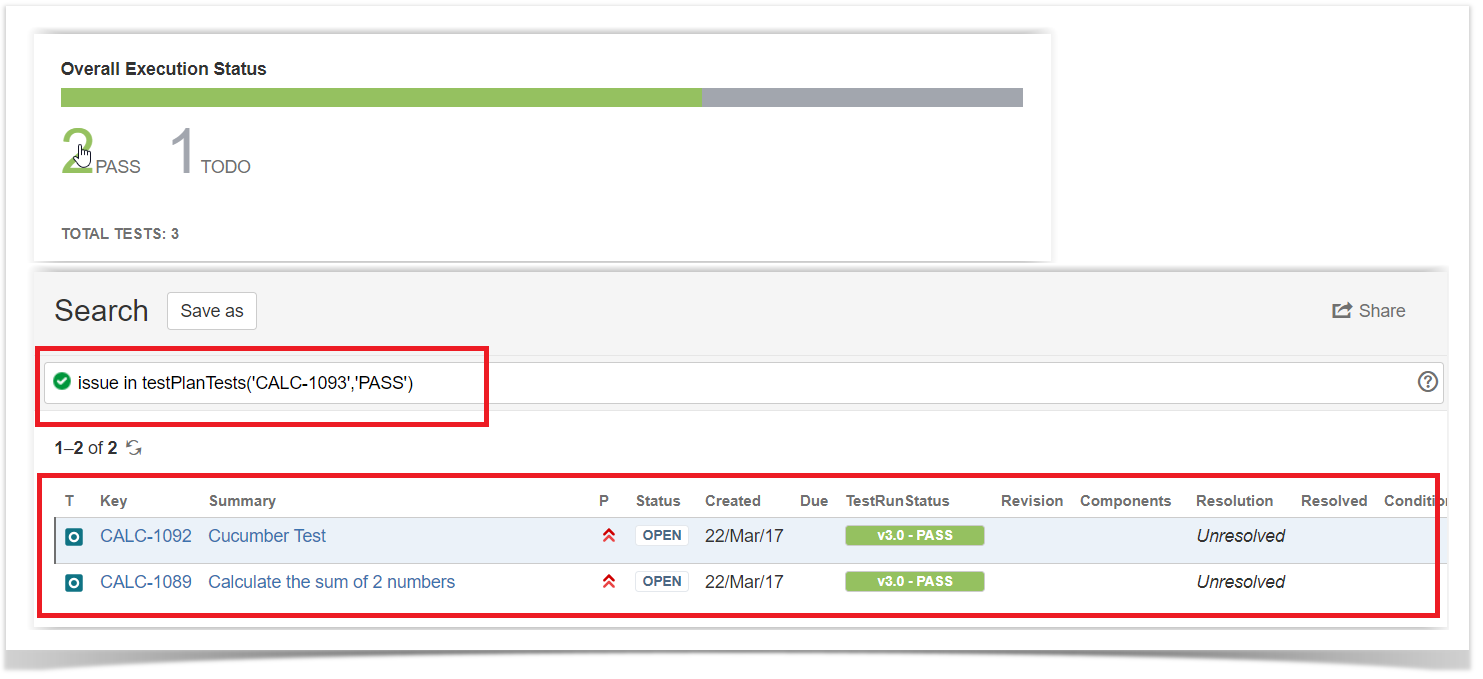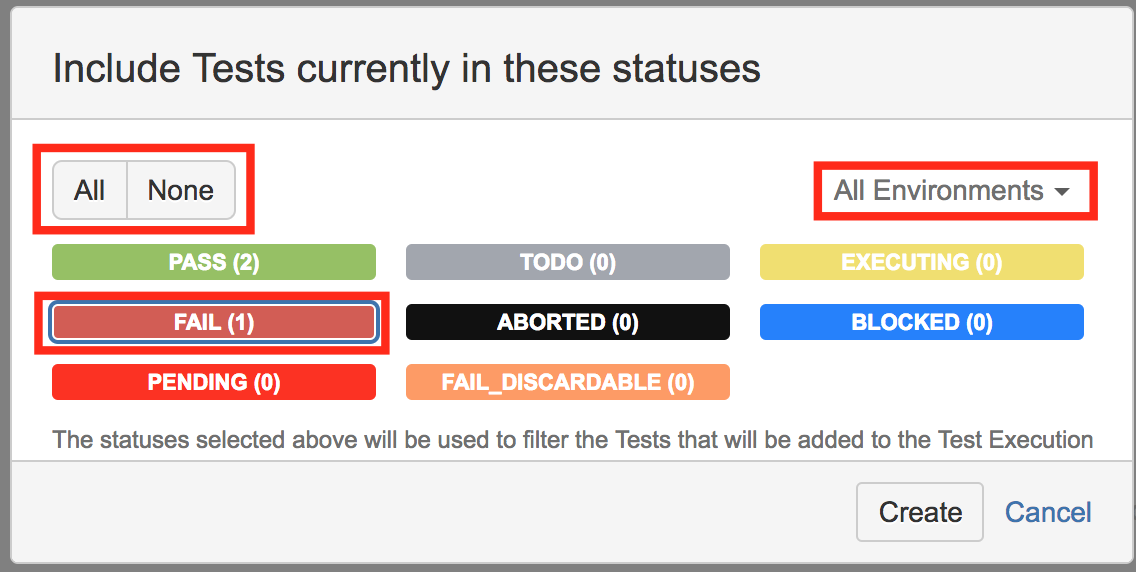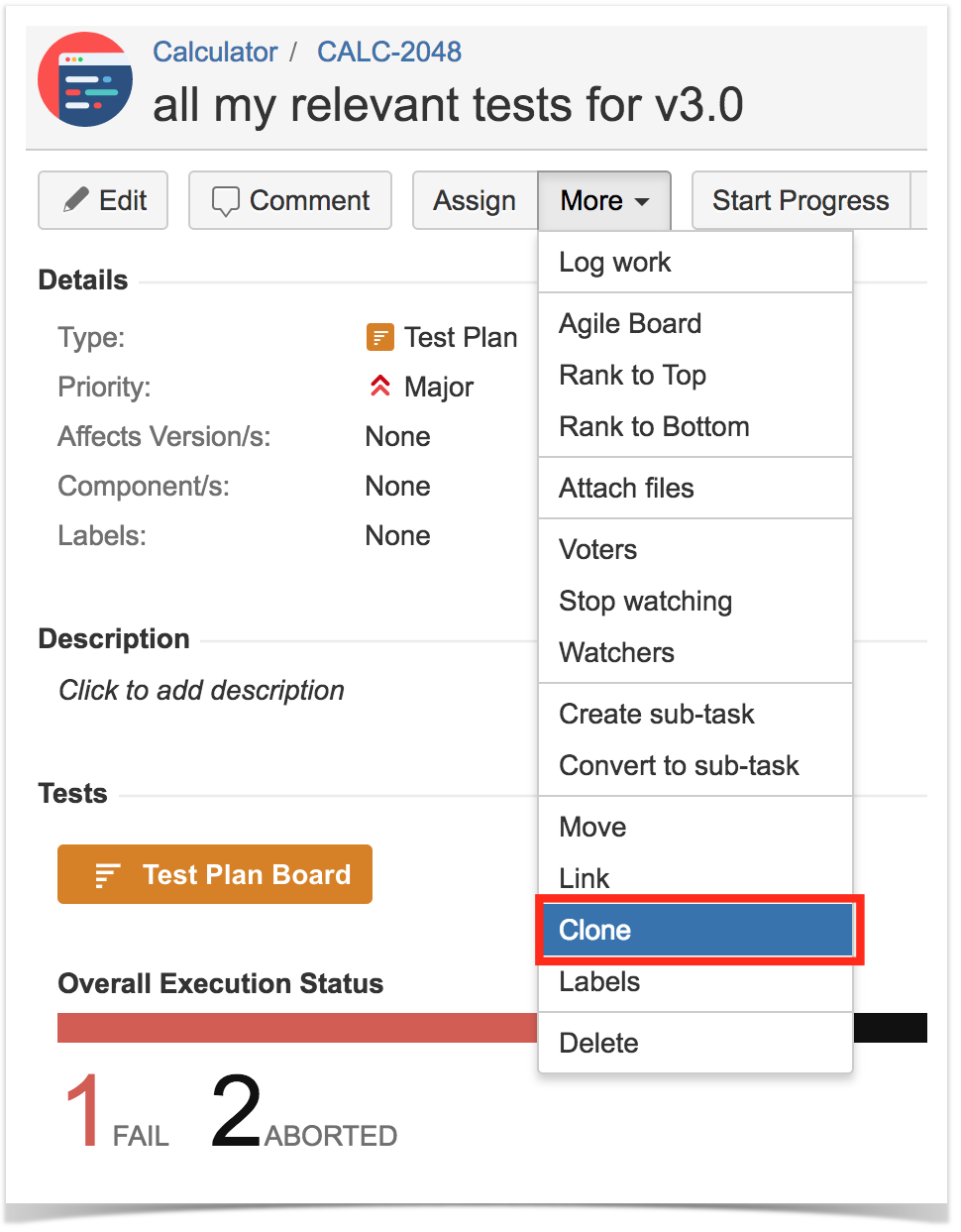The purpose of a Test Plan is to enable you to have a better visibility and management over your Tests.
It provides a table that shows all the Tests added to the Test Plan and their respective Test Executions that are also associated with the Test Plan.
If tracking a particular version, the Test Plan will present the latest status for each Test, independent of the number of testing iterations (i.e.,Test Executions) you make with them.
You can group a bunch of Test Executions and easily give feedback on the current/latest status of the Tests involved in those Test Executions.
From the Test Plan, it's possible to create one or more Test Executions, for all or just a subset of the Tests contained within the Test Plan (e.g., only those Tests that are still failling).
You are also able to assign one or more Test Plans to a given release and track progress of those tests within each Test Plan.
The coverage analysis can also be done taking into account just the tests from a given Test Plan and its related Test Executions.
Create Test Plan
To create a new Test Plan Issue,
Step 1: Click the Create Issue at the top of the screen to open the Create Issue dialog box / page.
Step 2: Select the Project and on Issue Type select Test Plan.
Step 3: Under the General tab, type a Summary for the test execution and fill all appropriate fields — mandatory fields are marked with an asterisk. If you're working with versions, then you should also fill out the Fix Version to indicate that you're tracking the results of the Tests for that version. This will be used to automatically fill out the Fix Version of the planned Test Executions (i.e., the ones linked to/created from this Test Plan).
Step 4: Under the Test Plan Details tab, you can populate the Test Plan custom fields provided by Xray, namely the Begin/End date. In this tab, you can also add tests to the Test Plan.
Optional: To create a series of similar Test Plans – within the same Project – select the Create another checkbox at the bottom of the dialog.
Step 5: When you are satisfied with the content of your Test Plan, click the Create button.
Step 5a: If you selected the Create another checkbox, a new Create Issue dialog appears. This issue is automatically pre-populated with your previous Test Plan details, while leaving the Summary field blank.
Add Tests to a Test Plan
Aside from adding Tests to the Test Plan using the issue create screen, you can also do it in the Test issue page.
Step 1: Click Add.
Step 2: Choose to add either Tests or Test Sets. Note that if you choose Test Sets, you are not actually adding Test Set(s); instead, you are adding the Tests that belong to that Test Set(s).
Step 3: Choose the Tests you want, by using the Select or Search tabs and then selecting some or all of them.
Step 4: Click Add selected or Add all.
Reorder Tests
Ranking of Tests within the Test Plan can be done in two ways: directly in the Test Plan issue screen (if Hierarchical Test Oganization is disabled) or in the Test Plan Board (if Hierarchical Test Organization is enabled). This means you can rank Tests, whether you use hierarchies or not.
Learn more
If you are using Hierarchical Test Organization, you can and have to the ranking within the Test Plan Board. More info here.
The following procedure details how you can change the order of the Tests, directly in the Test Plan issue screen.
There are two ways of changing the order of Tests within a Test Plan:
Drag-and-Drop
To reorder Tests,
Step 1: Open the Test Plan issue.
Step 2: Hover over the desired Test row (under the Tests section on the view page) and the drag handle column.
Step 3: Click the drag handle and move the Test up or down in the current page.
Change Rank Action
This action allows users to change the Rank of a Test between pages.
To change the rank of a Test,
Step 1: Open the Test Plan issue.
Step 2: Hover over the desired Test (under the Tests section on the view page)
Step 3: Click the gear that appears in the last column. The actions menu should pop up with the available actions.
Step 4: Click the Move To action. The change rank dialog appears.
Step 5: Enter the desired index number (1-based) and click OK.
Associate Test Executions to the Test Plan
Since the table only shows Test Runs for tests that are in the Test Plan and for Test Executions that are associated with the Test Plan, it's necessary to associate Test Executions with the Test Plan.
You can also add existing Test Execution issues directly to a Test Plan.
Test Executions can also be associated with a Test Plan by editing the custom field Test Plan in the Test Execution issue view page or directly in the create issue screen in the Test Execution Details tab. Note that with this method, only the Test Execution shall be associated with the Test Plan; the Tests will not be associated.
Test Plan table
The Test Plan Test view section in the issue page provides you with a table where you can see all the Tests that were added to the Test Plan and their Test Executions (if they are associated to the Test Plan).
- Create planned Test Execution (see next Section), so its results be reflected on the current Test Plan
- Add Tests and Test Sets
- Test Plan Progress Bar
- Table Filters
- Use a Test Environment to calculate the status for test issues for that environment.
It is possible to filter tests by status in Test Plan Progress Bar as shown in the image below:
Each row represents a Test with configurable columns, with the exception of the Latest Status. Each row also contains an inner table with information about the Test Execution. Click on the blue arrow to see the inner table for a particular test.
This inner table is similar to the Test Run table as it allows for inline execution ( 1 ) and for operations like assignee and remove ( 2 ). This inner columns are not configurable.
Create Test Executions from the Test Plan
There are several ways to create Test Executions directly in the Test Plan issue page.
Create planned Test Execution
The most common and straightforward option to create a Test Execution for all the Tests, or for a subset of those that are currently in some consolidated status, is by using the option available at the top of the Test Plan issue screen.
The Create Test Execution button will open a dropdown with some options that will allow you to select the Tests that will be part of the Test Execution.
Please note
In order to create a related Test Execution from the Test Plan, the user must be allowed to the edit the current Test Plan since the results on the Test Execution will affect the consolidated information shown at the Test Plan. The user will only be able to create Test Executions in certain projects, therefore the list of projects shown in the creation dialog will be filtered out accordingly.
All tests...
Lets you create a Test Execution with all the tests that are associated with the Test Plan.
Note: If the revision field is not configured in the create issue screen of the Test Execution for the selected Project, the field will not appear in the dialog. If there are some mandatory fields, the standard create issue screen will be shown.
With status...
Choose the Tests based on their consolidated status in a specific Test Environment. You can choose all Tests using the top left-side option; the Test Environment can be chosen in the top right-side option. For all shown status, you can see the amount of Tests that are currently in that consolidated status. You may choose one or more statuses. In the example below, we will be including just the (1) Test that is currently failing.
Bulk action
You can select some Tests, using the bulk selection (1), and then schedule a Test Execution for them.
Clone Test Plan and respective Board
A Test Plan along with its respective hierarchical information (i.e. the Board folder structure) can be cloned.
The new Test Plan will be created in a clean state, containing the original Tests without any execution related information. If hierarchical test organization, the Board folder structure is also cloned.


